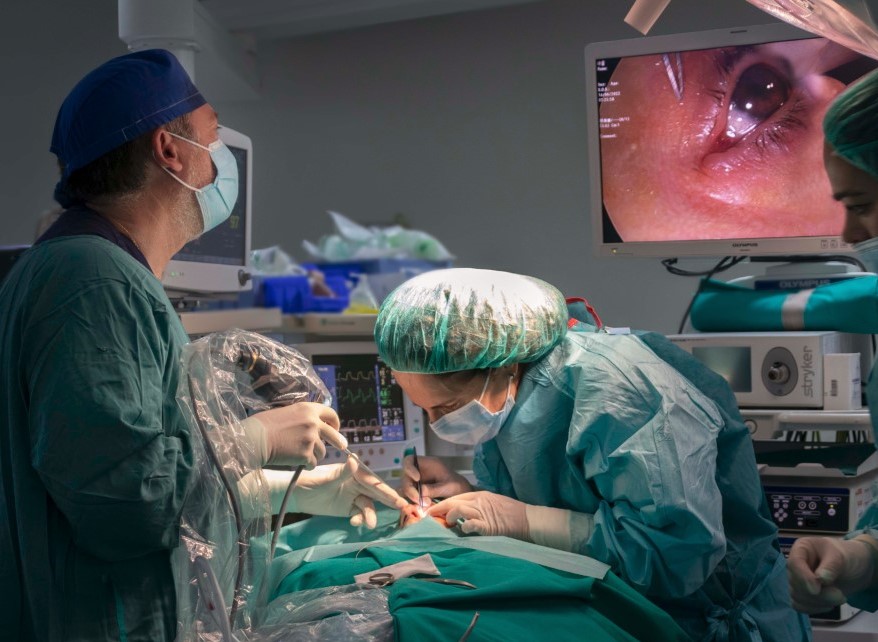Placement of Lester Jones tubes, an effective procedure to restore healthy drainage to lacrimal ducts
These last-generation tubes are the ideal solution for these types of situations or when all other surgery procedures fail.

Although it might sound contradictory, tears are a sign of good health, especially from an ophthalmological point of view. Tears have several essential functions such as lubricating the eyes, protecting them from infections and getting rid of foreign bodies.
It is estimated that one individual can produce an average of 0.2 to 0.5 millilitres of tears every day. However, their role can be compromised as a consequence of an obstruction of the lacrimal duct. "The drainage duct can be blocked by the swelling of the lacrimal sac due to infection (dacryocystitis), a congenital obstruction, an injury or a number of physiological changes occurring with age", explains Doctor Concepción Aránguez, a specialist of the Ophthalmology Unit of the Quirónsalud Marbella Hospital.
In the event of dacryocystitis, the initial course of treatment is based on antibiotics and anti-inflammatory drugs; however, should these prove ineffective, the Specialist may indicate surgery. Our expert highlights that the most common procedure is a dacryocystorhinostomy and it is performed in order to stop constant tearing. However, if the obstruction affects the entry of the lacrimal route, it may be necessary to create a new route with the placement of StopLoss® Jones tubes. These last-generation tubes are the ideal solution for these types of situations or when all other surgery procedures fail. "The procedure creates a deviation channel for tear drainage. It is a very safe system in comparison to the conventional techniques and its best advantage is its effectiveness to remain in place permanently without displacement, which makes it a highly-successful surgical procedure", explains our Ophthalmologist.
The procedure of placing Lester Jones tubes is generally performed in outpatient settings under general anaesthesia. During the procedure, the surgeon creates a new lacrimal route by transconjunctival approach, which means that it does not need external incisions.
The conjunctivodacryocystorhinostomy procedure is one of the consolidated techniques performed at the Ophthalmology Unit coordinated by Doctor Nabil Ragaei. This Unit specialises in the prevention, diagnosis and treatment of diseases associated with eye health, as well as their management and research, offering a solution to eyesight issues for a wide range of patients, from the youngest to the oldest. Its solid service portfolio has positioned the Ophthalmology Unit of our Marbella hospital as a reference in the area.






















